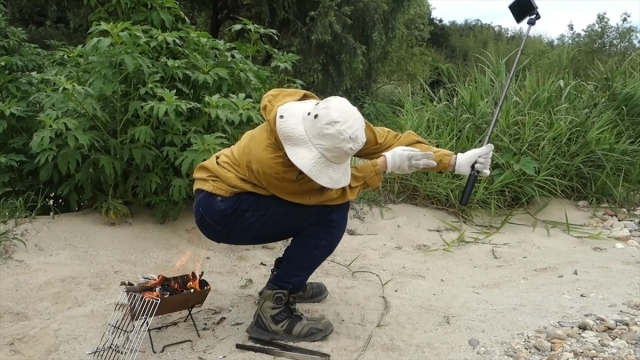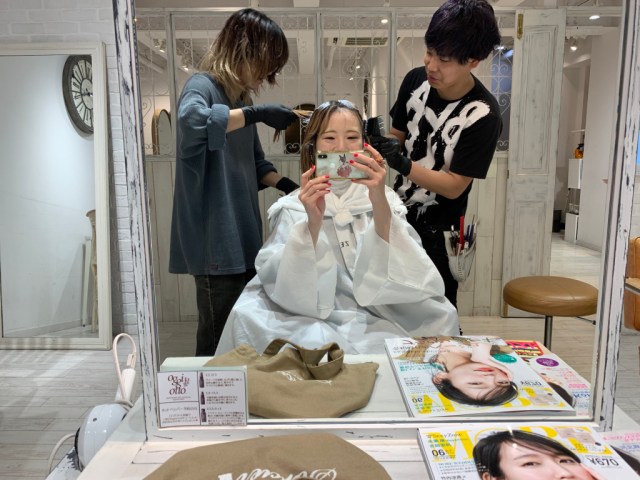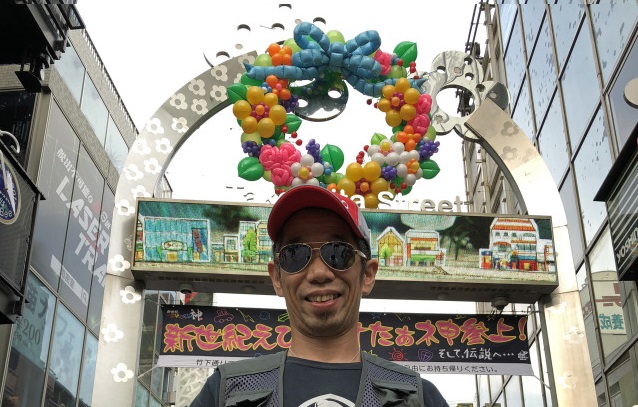style
The new “Obi de Boots iki” line of footwear represents a modern take on traditional styling.
The latest summer collection of our favorite modern samurai kimono offers a range of functionally fashionable garments.
Looking for a new ‘do? Leave everything to the staff at Sorcier’s in Tokyo–they’ll know exactly what to do.
How the loud-and-proud Fab Five were able to find success in a country that lags behind others when it comes to LGBTQ issues.
Check out these pawsitively epic kitty shirts available on Ameowzon Japan! (Uh, we mean Amazon. Amazon Japan.)
Uniqlo, the hugely popular Japanese chain store that stocks a variety of simple, practical and affordable clothing, has expanded into a world-wide venture, with stores in Singapore, Australia, the United Kingdom, the United States, Germany, France, Russia, Hong Kong, Indonesia, Bangladesh, and, well, you get the picture. In the West in particular, Uniqlo has a pretty cool image thanks to its simple, pared-down designs and celebrity approval (for example, Pharrell Williams designed a range for them in April 2014), so it might surprise some of you to hear that there are people in Japan who tend to be a bit snobby about Uniqlo, looking down on its regular clientele for lacking in fashion sense.
It’s no secret that ladies in Asia have become the masters of makeup in recent years, with shocking before-and-after transformations popping up online pretty much on the reg. In Japan in particular, makeup trends tend to follow a very different format to those in the west, with plenty of tips and tricks designed to highlight features we wouldn’t even consider, such as the angle of an eyelid crease, or the puffiness of eyebags. There’s even makeup that’s designed to make you look a bit ill.
This new makeup palette seems at first glance to be nothing more than a cute product themed around a fairytale character. In actuality, it’s the perfect tool for creating one of the past year’s most unusual trends, “undereye blush”.
Japan isn’t that big geographically, but it’s still divided up into 47 different prefectures. Even though it’ll usually only take you a couple of hours to pass from one into the other (and even less if you’re on the Shinkansen), each has its own unique feel to it. Depending on where you are, people eat different foods, celebrate holidays in different ways, and even like different clothes, as shown by a study that reveals how Japanese women like to dress by prefecture.




















 Starbucks Japan ready to get Year of the Horse started with adorable drinkware and plushies【Pics】
Starbucks Japan ready to get Year of the Horse started with adorable drinkware and plushies【Pics】 We found possibly the quietest Japanese-style hotel in Tokyo’s bustling Shinjuku district
We found possibly the quietest Japanese-style hotel in Tokyo’s bustling Shinjuku district More Than a Capsule Stay: Why Solo Travelers Choose “global cabin Yokohama Chinatown”
More Than a Capsule Stay: Why Solo Travelers Choose “global cabin Yokohama Chinatown” 7 great places to see Mt. Fuji from without having to climb it
7 great places to see Mt. Fuji from without having to climb it Kagoshima conveyor belt sushi chain Mekkemon rises above the rest with its special secret weapon
Kagoshima conveyor belt sushi chain Mekkemon rises above the rest with its special secret weapon New Japanese-made Godzilla movie announced, looks to be first direct sequel since 1999
New Japanese-made Godzilla movie announced, looks to be first direct sequel since 1999 The world’s biggest Muji store opened in Hiroshima, and we went to check it out!
The world’s biggest Muji store opened in Hiroshima, and we went to check it out! Studio Ghibli anime Paper Shadow Art craft kits back in stock in time for the holidays【Pics】
Studio Ghibli anime Paper Shadow Art craft kits back in stock in time for the holidays【Pics】 Free bus tours of Japan’s famous “Disaster Prevention Underground Temple” underway
Free bus tours of Japan’s famous “Disaster Prevention Underground Temple” underway Japanese group to hold fashion show of colostomy bags and other stoma equipment in Paris
Japanese group to hold fashion show of colostomy bags and other stoma equipment in Paris 7-Eleven Japan’s ramen-cooking robot whipped us up a bowl of noodles【Taste test】
7-Eleven Japan’s ramen-cooking robot whipped us up a bowl of noodles【Taste test】 Lacquerware supplier to emperor of Japan and Pokémon team up for new tableware
Lacquerware supplier to emperor of Japan and Pokémon team up for new tableware Cyberpunk anime meets traditional culture in Ghost in the Shell gold leaf Japanese changing screens
Cyberpunk anime meets traditional culture in Ghost in the Shell gold leaf Japanese changing screens Japan may add Japanese language proficiency, lifestyle classes to permanent foreign resident requirements
Japan may add Japanese language proficiency, lifestyle classes to permanent foreign resident requirements Hello Kitty Choco Egg figures are an adorable trip through three periods of Japanese pop culture【Pics】
Hello Kitty Choco Egg figures are an adorable trip through three periods of Japanese pop culture【Pics】 Japan’s otoshidama tradition of giving kids money at New Year’s gets a social welfare upgrade
Japan’s otoshidama tradition of giving kids money at New Year’s gets a social welfare upgrade Starbucks Japan releases new zodiac chilled cup drink for 2026
Starbucks Japan releases new zodiac chilled cup drink for 2026 Can a dirty butthole make you filthy rich in Japan? We’re starting a New Year’s lottery experiment
Can a dirty butthole make you filthy rich in Japan? We’re starting a New Year’s lottery experiment 7-Eleven Japan starts new temporary luggage storage service in over 300 branches
7-Eleven Japan starts new temporary luggage storage service in over 300 branches Disillusionment at Tsukiji’s tourist-target prices led us to a great ramen restaurant in Tokyo
Disillusionment at Tsukiji’s tourist-target prices led us to a great ramen restaurant in Tokyo Starbucks teams up with 166-year-old Kyoto doll maker for Year of the Horse decorations【Photos】
Starbucks teams up with 166-year-old Kyoto doll maker for Year of the Horse decorations【Photos】 Tokyo considering law requiring more trash cans following litter increase in heavily touristed area
Tokyo considering law requiring more trash cans following litter increase in heavily touristed area Tokyo’s Tsukiji sushi neighborhood asks tour groups to stay away for the rest of the month
Tokyo’s Tsukiji sushi neighborhood asks tour groups to stay away for the rest of the month Nintendo’s Kirby now delivering orders at Kura Sushi restaurants, but not in Japan
Nintendo’s Kirby now delivering orders at Kura Sushi restaurants, but not in Japan Tokyo event lets you travel back in time, for free, to celebrate 100 years since Showa era start
Tokyo event lets you travel back in time, for free, to celebrate 100 years since Showa era start Sanrio theme park in Japan announces plans to expand into a Sanrio resort
Sanrio theme park in Japan announces plans to expand into a Sanrio resort Stamina-destroying “Paralysis Noodles” are Tokyo’s newest over-the-top ramen innovation
Stamina-destroying “Paralysis Noodles” are Tokyo’s newest over-the-top ramen innovation Survey asks foreign tourists what bothered them in Japan, more than half gave same answer
Survey asks foreign tourists what bothered them in Japan, more than half gave same answer Japan’s human washing machines will go on sale to general public, demos to be held in Tokyo
Japan’s human washing machines will go on sale to general public, demos to be held in Tokyo Japan’s deadliest food claims more victims, but why do people keep eating it for New Year’s?
Japan’s deadliest food claims more victims, but why do people keep eating it for New Year’s? We deeply regret going into this tunnel on our walk in the mountains of Japan
We deeply regret going into this tunnel on our walk in the mountains of Japan Studio Ghibli releases Kodama forest spirits from Princess Mononoke to light up your home
Studio Ghibli releases Kodama forest spirits from Princess Mononoke to light up your home Major Japanese hotel chain says reservations via overseas booking sites may not be valid
Major Japanese hotel chain says reservations via overseas booking sites may not be valid Put sesame oil in your coffee? Japanese maker says it’s the best way to start your day【Taste test】
Put sesame oil in your coffee? Japanese maker says it’s the best way to start your day【Taste test】 No more using real katana for tourism activities, Japan’s National Police Agency says
No more using real katana for tourism activities, Japan’s National Police Agency says Starbucks Japan reveals new sakura drinkware collection, inspired by evening cherry blossoms
Starbucks Japan reveals new sakura drinkware collection, inspired by evening cherry blossoms Updated cherry blossom forecast shows extra-long sakura season for Japan this year
Updated cherry blossom forecast shows extra-long sakura season for Japan this year New Japanese-made Godzilla movie announced, looks to be first direct sequel since 1999
New Japanese-made Godzilla movie announced, looks to be first direct sequel since 1999 The world’s biggest Muji store opened in Hiroshima, and we went to check it out!
The world’s biggest Muji store opened in Hiroshima, and we went to check it out! Studio Ghibli anime Paper Shadow Art craft kits back in stock in time for the holidays【Pics】
Studio Ghibli anime Paper Shadow Art craft kits back in stock in time for the holidays【Pics】 Free bus tours of Japan’s famous “Disaster Prevention Underground Temple” underway
Free bus tours of Japan’s famous “Disaster Prevention Underground Temple” underway Japanese group to hold fashion show of colostomy bags and other stoma equipment in Paris
Japanese group to hold fashion show of colostomy bags and other stoma equipment in Paris Nintendo’s controller capsule toys are so cool, even the machine you buy them from is awesome【Pics】
Nintendo’s controller capsule toys are so cool, even the machine you buy them from is awesome【Pics】 We make a super giant sushi using Costco salmon in Japan【SoraKitchen】
We make a super giant sushi using Costco salmon in Japan【SoraKitchen】 Japan’s oldest largetooth sawfish in captivity back on display in Mie Prefecture
Japan’s oldest largetooth sawfish in captivity back on display in Mie Prefecture W.T.F. Japan: Top 5 strangest kanji ever 【Weird Top Five】
W.T.F. Japan: Top 5 strangest kanji ever 【Weird Top Five】 Large amount of supposed human organs left in Osaka marketplace
Large amount of supposed human organs left in Osaka marketplace Japanese sweets artist makes incredible Pokémon cake for son’s birthday
Japanese sweets artist makes incredible Pokémon cake for son’s birthday We open a mysterious package from China, unveil a cheeky surprise
We open a mysterious package from China, unveil a cheeky surprise Japanese restaurant serves extra wide noodles next to Tokyo Station
Japanese restaurant serves extra wide noodles next to Tokyo Station